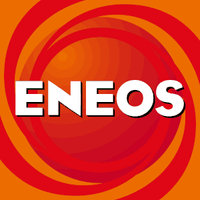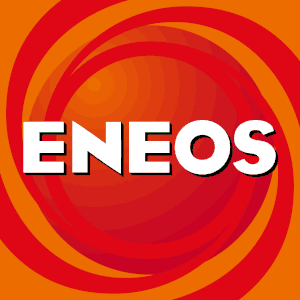
ENEOS Holdings Inc
TSE:5020


Utilize notes to systematically review your investment decisions. By reflecting on past outcomes, you can discern effective strategies and identify those that underperformed. This continuous feedback loop enables you to adapt and refine your approach, optimizing for future success.
Each note serves as a learning point, offering insights into your decision-making processes. Over time, you'll accumulate a personalized database of knowledge, enhancing your ability to make informed decisions quickly and effectively.
With a comprehensive record of your investment history at your fingertips, you can compare current opportunities against past experiences. This not only bolsters your confidence but also ensures that each decision is grounded in a well-documented rationale.
Do you really want to delete this note?
This action cannot be undone.

| 52 Week Range |
550.9
856.5
|
| Price Target |
|
We'll email you a reminder when the closing price reaches JPY.
Choose the stock you wish to monitor with a price alert.
This alert will be permanently deleted.
 ENEOS Holdings Inc
ENEOS Holdings Inc


 You don't have any saved screeners yet
You don't have any saved screeners yet

Good afternoon, ladies and gentlemen, this is Ouchi. I would like to take this opportunity to thank shareholders and investors for their support and advice for the business activities of the JXTG Group. Let me begin my presentation. Slide 2, please.
This is a summary of the financial results. For the third quarter of fiscal year 2019, operating income, excluding the impact of inventory valuation, was JPY 272.2 billion, down JPY 167.8 billion year-on-year. Operating income for the October-December period was JPY 102 billion, an increase of JPY 3.1 billion year-on-year. The gap we had at the end of the first half remained almost unchanged as of the end of the third quarter. The margins for the white oil products, namely gasoline, kerosene, diesel fuel and fuel oil A had remained strong since the inception of the JXTG Group 2 years ago, supported by the improving supply-demand balance in the domestic fuel oil market as well as integration synergies. However, the decline in crude oil, copper and other resource prices caused the profitability of the oil and gas development and upstream copper businesses to deteriorate by about JPY 20 billion.
In petrochemicals, the supply-demand balance continue to loosen due to increased supplies from China following the start-up of new facilities causing paraxylene and other products margins to deteriorate by about JPY 80 billion. In the electronic materials business, sales volume was sluggish, mainly due to the U.S.-China trade friction and associated slowdown of the Chinese economy and adjustments in smartphone-related demands.
In addition, profits declined year-on-year, also due to the absence of the JPY 77.7 billion gain on sale of the cell culture business, we had in the previous fiscal year. The full year forecast remained unchanged from the JPY 350 billion, we had announced in November. The ongoing concern about novel coronavirus outbreak triggering economic slowdown has been severely affecting resource prices. We will continue to pay attention to the effect. The progress rate against the full year forecast up to Q3 was 78%. That was the summary of the financial results.
Please see Page 3 for an overview of the profits and losses statement. As mentioned earlier, as you can see in the middle of the slide, operating income was JPY 221.4 billion for the third quarter of fiscal year 2019, including the JPY 50.8 billion negative impact of inventory valuation. Operating income excluding the impact of inventory valuation was JPY 272.2 billion. After the financial losses, profit attributable to owners of the parent was JPY 124.6 billion, which is, as you can see on the right-hand side, a decrease of JPY 153.7 billion or 55% compared with the third quarter of fiscal year 2018.
Please turn to Slide 4 for resource prices. As usual, crude oil prices are shown on the left-hand side. Due to the U.S.-China trade friction and accompanied uncertainty over the global economic outlook, as shown by the solid line for this fiscal year, crude oil prices had fallen from around $70 in April to around $60 in June. In the third quarter, crude oil prices rose due to the expansion of coordinated oil production cuts by OPEC plus. After that, in the beginning of the year, following the death of the Iranian Revolutionary Guard's, Commander, prices surged temporarily. However, after the both U.S. and Iran showed a willingness to avoid a war, prices started falling again and kept falling during the latter half of January, affected by the outbreak of the novel coronavirus, fueling concern over a possible decline in demand.
The chart shows the trends up to the first week of February 2020. Copper prices fell sharply from April to August due to the trade friction between the U.S. and China. They rose from October following the tightening of the supply-demand balance caused by downward revisions of the global copper production outlook by major resource companies due to the civil turmoil in Chile. But at the moment, like in the case of crude oil, the novel coronavirus is fueling concern over a possible decline. The FX rate is around JPY 110.
Please turn to Page 5 for the white oil and the paraxylene margins. On the left, white oil product margins are shown. Light pink is for last year and darker pink is for this year. Last year, for the beginning of the fiscal year through Q3, resource prices declined and so did margins before they started to recover. The average is slightly below JPY 11. This year, as shown by darker pink bars, the trend has been upward since the beginning of the year, and the average margin up to Q3 was around JPY 11, almost unchanged from the favorable level recorded in the previous year.
As shown in the right-hand side table, the paraxylene margin fell by about $200 since the beginning of the year as the supply-demand loosened in response to the increased supply from Asia.
On Page 6 onward, you can see operating income by segment. For the 3 core businesses, I will explain the waterfall chart on the following pages. Starting with the Other segment, we saw a decline of JPY 9.6 billion from the same period of the previous year, and this was due to the absence of the gain on asset sales recorded in the previous year.
Please turn to Page 7, which shows the waterfall chart for the Energy business. Operating income, excluding inventory valuation, decreased JPY 131.6 billion year-on-year to JPY 150.4 billion. Earnings from white oil products shown on the left are down JPY 52.7 billion. Out of that amount, JPY 77.7 billion was due to the absence of the capital gain we had in the previous year from the sale of the cell culture business.
Sales volume decreased earnings by JPY 14.5 billion. This is due to our profitability forecast sales activity, leading to less sales volumes in white oil products and cokes. Margin and other factors made a positive contribution, though there was no profit this year related to the integration of the pension schemes we had last year. The main factors for the improvement came from increased margins of white oil products and cokes and the decreased impact from refinery troubles. Integration synergies are as shown at the bottom of the slide. The total value up to the third quarter was JPY 89.4 billion, an increase of JPY 29.1 billion from the same period of last year. So far, we've made a good progress.
Petrochemical products declined JPY 78.9 billion, almost all of it is due to the deterioration of margins. As shown on Page 5, the market has been sluggish due to the loosened supply-demand balance following the start-up of new paraxylene facilities.
Please move to Page 8 for the upstream petroleum business. Operating income in the oil and natural gas E&P business decreased JPY 17.9 billion year-on-year to JPY 40.1 billion. As shown in the middle of the waterfall chart, the main factor was the decrease of JPY 13.9 billion, caused by lower oil prices. The decline of JPY 4 billion, the sum of volume and other factors was due to the absence of gains we had last year from asset sales, although there was some improvement coming from the start of production at the Mariner and the Culzean Gas Field.
Last but not least, Page 9 is the Metal business. Operating income, excluding the impact of inventory valuation, declined JPY 8.7 billion year-on-year to JPY 50.4 billion. Resource development deteriorated JPY 800 million. The decline in copper prices shown in the middle resulted in a negative impact of JPY 6.5 billion. By location, the Caserones Copper Mine accounted for JPY 3.9 billion, and the others, JPY 2.6 billion.
In response to the price deterioration of JPY 3.9 billion, Caserones improved its operations and increased operating income by JPY 2.9 billion. As a result, Caserones operating profit was positive JPY 6.9 billion. Smelting and refining improved its performance helped by higher sulfuric acid prices. Electronic materials processing, environmental recycling and others declined JPY 10.1 billion. Electronic materials, recycling and environmental services and others deteriorated mainly due to the U.S.-China trade friction, declined sales and the customers' inventory adjustments.
Now Page 10, please, for the balance sheet and the cash flow statement. First, please take a look at the cash flow statement on the right-hand side. As usual, I would like to comment on figures, excluding the effect of lease accounting. Cash flows from operating activities was a cash inflow of JPY 237.5 billion, which is operating income of JPY 272.2 billion minus depreciation and amortization of JPY 194.7 billion. Seasonal factors, such as increasing kerosene inventory, corporate income tax and the petroleum taxes, totaling JPY 229.4 billion.
Cash flows from investing activities was a cash outflow of JPY 277.1 billion, resulting in free cash flow of negative JPY 39.6 billion. Net cash flow, including dividends and other factors, was negative JPY 189.8 billion.
The balance sheet is shown to the left. Interest-bearing debt increased JPY 179.9 billion on a net basis. Factors behind it is shown in the little box at the bottom.
The equity ratio attributable to owners of the parent was 30.3%. The net D/E ratio was 0.65x.
Lastly, please turn to Page 11 for shareholder returns. At the top, our shareholder return policy is stated again. This is unchanged from the previous explanation. Regarding specific returns, we have already announced that the annual dividend per share will be JPY 22, an increase of JPY 1 from the previous year. And the acquisition of treasury stock for a total of 100 million shares was JPY 48.9 billion has been carried out. All of the shares acquired have been canceled as of last November.
Currently, as shown at the bottom, the second medium-term management plan is being formulated at the moment. Shareholder return policy is under discussion. We are trying to secure a total return ratio of 50% or more and a minimum level, which is higher than the current amount. Those specific amounts are determined after taking into account the results of the first medium-term management plan and improvement of the financial position.
Page 12 onwards are just for your reference and will not be covered in the presentation.
With this, I will conclude my remarks. Thank you.